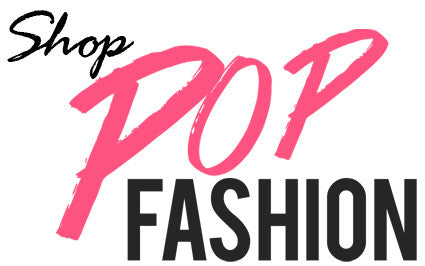Choosing the Right Scarf for Your Face Shape and Outfit
Posted on January 11 2025

Scarves are one of the most versatile accessories in fashion, offering endless ways to enhance your look. They can add a pop of color, provide warmth, or make a bold statement. However, choosing the right scarf isn’t just about picking a pattern or fabric you like; it’s also about complementing your face shape and outfit. In this guide, we’ll explore how to select the perfect scarf for your unique features and wardrobe.
Understanding Face Shapes and Scarf Styles
The way a scarf frames your face can significantly influence your overall look. Let’s break down the best scarf styles for each face shape:
-
Oval Face Shape
-
Characteristics: Balanced proportions, slightly longer than wide.
-
Best Scarves: People with an oval face shape can wear almost any scarf style. Experiment with bold patterns, chunky knits, or delicate silk scarves. Try draping it loosely around your neck or tying it in a creative knot for a flattering look.
-
-
Round Face Shape
-
Characteristics: Soft, circular contours with equal width and length.
-
Best Scarves: Opt for long, flowing scarves to create the illusion of length. Vertical drapes and thin fabrics like chiffon or silk work well. Avoid chunky or tight styles that can add extra width to your face.
-
-
Square Face Shape
-
Characteristics: Strong jawline, broad forehead, and equal proportions.
-
Best Scarves: Choose soft, flowing scarves to soften angular features. Infinity scarves or loose, round styles can balance the sharpness of a square face. Avoid overly structured or boxy styles.
-
-
Heart Face Shape
-
Characteristics: Wider forehead, narrow chin.
-
Best Scarves: Light, airy scarves that add volume around the neck are ideal. Triangle-shaped scarves or loose draping styles can balance the proportions of a heart-shaped face. Avoid high knots that draw attention to the forehead.
-
-
Oblong/Rectangular Face Shape
-
Characteristics: Longer than wide, with a narrow width.
-
Best Scarves: Shorter scarves or bulkier styles like cowls and chunky knits work well. These add width and balance to a long face. Avoid styles that hang straight down, as they can elongate the face further.
-
Coordinating Scarves with Outfits
Once you’ve identified the best scarf styles for your face shape, it’s time to consider how to pair them with your outfits. Here are some tips to ensure your scarf complements your look:
-
Color Coordination
-
Match your scarf to your outfit by selecting complementary or contrasting colors. For a monochromatic look, choose a scarf in a similar shade but with a different texture or pattern. For a bold statement, opt for vibrant colors that pop against neutral clothing.
-
-
Pattern Play
-
If your outfit is plain, a patterned scarf can add visual interest. On the other hand, pair a simple, solid-colored scarf with a patterned outfit to avoid clashing. Stripes, florals, and geometric designs are excellent choices to express personality.
-
-
Seasonal Considerations
-
Light fabrics like silk or cotton are perfect for spring and summer, while wool and cashmere are better suited for fall and winter. Match the weight of your scarf to the season and the rest of your outfit.
-
-
Occasion Matters
-
For formal events, opt for sleek, elegant scarves in luxurious fabrics like silk or satin. Casual outings call for relaxed styles such as infinity scarves or chunky knits. Choose a scarf that aligns with the occasion’s dress code.
-
Styling Tips for Every Look
-
Layering with Jackets: Pair long scarves with structured jackets for a chic layered effect. Drape the scarf over your shoulders and let it hang loose or tie it neatly for a polished look.
-
With Dresses: Use a scarf as a belt to cinch your waist, or drape it around your shoulders for added elegance.
-
Office Wear: Pair a silk scarf with a blouse and blazer for a professional, sophisticated appearance. A simple knot or a tidy fold works best in office settings.
-
Casual Outfits: For relaxed days, wrap a chunky scarf around your neck to add warmth and style to jeans and a sweater.
How to Accessorize with Scarves
Scarves can be more than just a neck accessory. Consider these creative ways to incorporate scarves into your look:
-
Headscarves: Wrap a scarf around your head for a retro or boho vibe.
-
Bag Accessory: Tie a small scarf to the handle of your handbag for a pop of color.
-
Bracelets: Wrap a thin scarf around your wrist for a unique, chic bracelet.
-
Hair Accessories: Use a scarf as a hair tie or a headband for an effortless, stylish touch.
Common Mistakes to Avoid
-
Overwhelming Proportions: Ensure the size of the scarf doesn’t overwhelm your frame or face. Petite individuals may prefer smaller scarves, while larger scarves can complement taller or broader frames.
-
Ignoring Fabric: The fabric of your scarf should match the formality and texture of your outfit. For instance, pairing a chunky knit scarf with a delicate evening dress may look mismatched.
-
Clashing Colors: Be mindful of color combinations. Stick to tones that harmonize with your overall outfit.
-
Over-layering: Avoid pairing bulky scarves with heavily layered outfits, as this can create a cluttered appearance.
Finding Your Signature Scarf Style
Choosing the right scarf is about balancing personal style with practical considerations. Experiment with different styles, fabrics, and patterns to discover what makes you feel confident and comfortable. Remember, scarves are a versatile accessory that can transform any outfit into something truly special.
Conclusion
Scarves are more than just a functional accessory—they’re a statement piece that can enhance your face shape and elevate your outfit. By understanding your features and coordinating thoughtfully, you can make scarves an integral part of your style. So go ahead, embrace the versatility of scarves, and find the perfect one to complement your look and personality.
